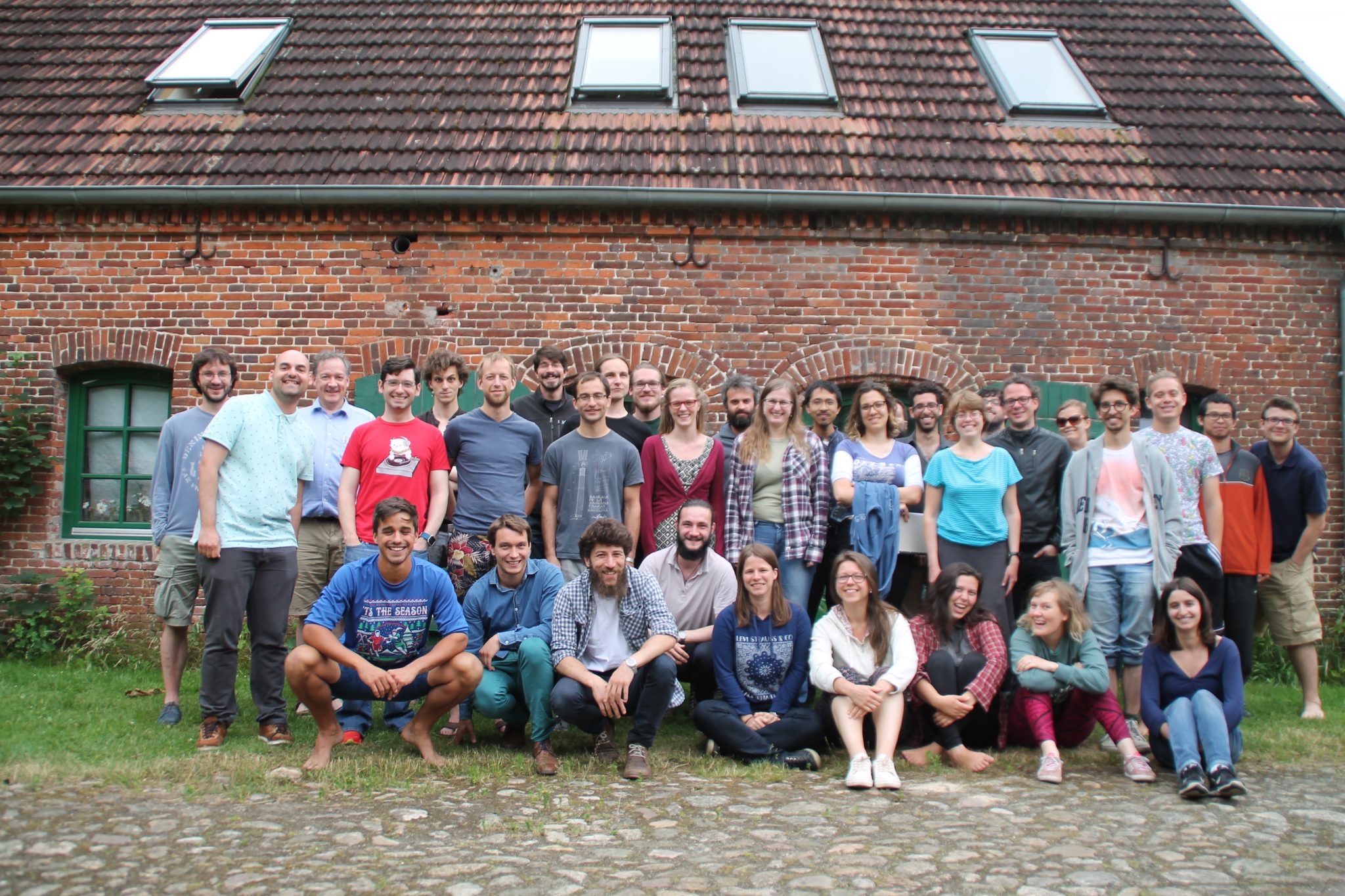Geestland ,Lower Saxony, Germany
June 11th – June 17th, 2017
About
The third European Talbot workshop will take place in Germany from June 11 to June 17, 2017. The goal is to bring together a group of 30-35 graduate students and post-docs to work on a focused topic under the guidance of two senior mentors.
Most of the talks will be given by the participants, with enough free time in the afternoon and evenings for further discussions and interaction. The character of the workshop is expository in nature, starting with the basic ideas and leading to a survey of the most recent developments in the field. Since all participants will stay together at a group house, jointly responsible for cooking and cleaning, we hope to create an informal and inspiring atmosphere.
Topic
Algebraists, geometers and topologists have been fascinated by duality since the start of their subjects. As the infrastructure has developed, the congruence of these dualities has become steadily more apparent, to the extent that it is now possible to consider them all in a common formal homotopy invariant framework. The principal goal of the workshop is to understand various duality phenomena in algebra, geometry and topology from a homotopical point of view.
Perhaps the most familiar example is Poincare duality and its incarnations in all three areas. Going beyond things which are visibly finite, we see a number of deep phenomena (Benson–Carlson duality in representation theory, Gross–Hopkins duality in stable homotopy theory, …) that can be viewed as Gorenstein duality in a homotopy invariant context. Similarly Serre and Grothendieck duality in algebraic geometry lead to Gorenstein duality for connective spectra and Anderson duality for various spectral counterparts of objects with Serre duality.
The three main themes of this workshop are
(a) Gorenstein duality in algebra
(b) Serre duality in geometry and
(c) group actions,
brought together in a homotopy invariant context. Throughout the week, the general theory will be developed in parallel to the discussion of illustrating examples from algebra, chromatic homotopy theory and modular forms. We thus hope to gather people with diverse backgrounds to explore an exciting modern framework for such duality phenomena.
Schedule
Monday: Classical Duality
1. Introduction
2. Serre duality in algebraic geometry
3. Local cohomology
4. Gorenstein duality
Tuesday: Algebraic Geometry
5. Formal group laws, formal groups
6. Stacks
7. Elliptic curves, moduli of elliptic curves
8. Modular forms, j-invariant
Wednesday: A motivating example & Spectra
9. Duality in group cohomology
10. Spectra
Thursday: Tmf Dualities
11. Commutative ring spectra
12. Tmf I – statements and basic properties
13. Tmf II – unpacking and extensions to larger sites
14. Stojanoska’s work on duality around Tmf
Friday: Equivariant extension
15. Unstable equivariant homotopy
16. Stable equivariant homotopy
17. Equivariant applications: tmf1(3)
18. Equivariant applications: BPR<n>
Participants:
(1) Dominik Absmeier
(2) Katharine Adamyk
(3) Bertram Arnold
(4) Tom Bachmann
(5) Tobias Barthel
(6) Ben Briggs
(7) Dominic Culver
(8) Jack Davies
(9) John Greenlees
(10) Alice Hedenlund
(11) Mike Hill
(12) Joshua Hunt
(13) Jocelyne Ishak
(14) Magdalena Kedziorek
(15) Pax Kivimae
(16) Inbar Klang
(17) Dimitar Kodjabachev
(18) Juultje Kok
(19) Johan Konter
(20) Achim Krause
(21) Janina Letz
(22) Anja Meyer
(23) Alon Nissan-Cohen
(24) Viktoriya Ozornova
(25) Eric Peterson
(26) Luca Pol
(27) J.D. Quigley
(28) Julia Semikina
(29) Jay Shah
(30) Liran Shaul
(31) Sean Tilson
(32) Jordan Williamson
(33) Richard Wong
(34) Lior Yanovski
(35) Mingcong Zeng
Contact
For questions or suggestions, please send an email to the organizers etalbot2017@gmail.com.
This workshop is organized by Bertram Arnold, Tobias Barthel, Magdalena Kedziorek, and Sean Tilson, and its concept has been inspired by the US Talbot workshop. We gratefully acknowledge funding and support from SPP 1786.
